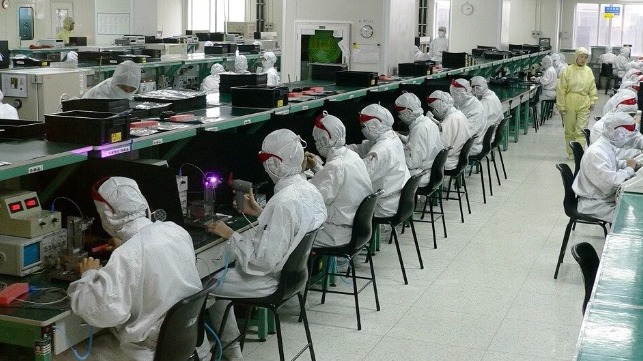For Manufacturers, Quitting China is Easier Said Than Done

The deepening Shanghai lockdown has sent shivers through the shipping community. The home to the world’s largest container port, which processes over 40 million TEU per year, is still a great source of uncertainty.
These disruptions are driving a debate on supply chains diversification and resilience. In fact, there is a new wave of headlines revealing how global corporations are weaning off their dependence on China.
For instance, Mexico is said to be a major beneficiary of near-shoring initiatives by large American corporations. According to new data by procurement software firm Jaggaer, in 2021 American manufacturers solicited chemicals, produce and construction materials from Mexican suppliers six times more than they did in 2020. At the same time, the number of suppliers in China that received procurement bids declined by nine percent in 2021. Jaggaer relied on data of its 30 biggest U.S manufacturing customers with an average turnover of over $30 billion in annual revenues.
But the question is, has the needle moved in terms of manufacturers quitting China?
“The numbers tell a different story from what the headlines suggest. In fact, when it comes to electronics and machinery, the Asia supply chain remains little changed. While there has been some diversification from China, this ‘shift’ is actually less than meets the eye,” posits Rita Rudnik, an Associate at MacroPolo, a think tank linked to Paulson Institute.
Rita analyzed data for purported market loss by China, specifically production and exports of electronics and machinery. The sector constitutes the largest global trade in value with China. However, it seems as if China is losing to Southeast Asian countries, particularly Vietnam.
The most cited evidence for this is the 10 percent drop of China’s electronics exports to US from 2018 to 2021. Most of the share was picked up by Vietnam. Nonetheless, the benefits accrued to Vietnam and Southeast countries remains marginal.
“It is true that the ‘Made in’ label has switched from China to Vietnam for some products as the latter took over the final assembly, the lowest part of the value chain. But China’s overall manufacturing levels have remained consistently high even during the global recession triggered by the pandemic. Relative to China’s overall production volume, the shift to Southeast Asia is negligible at the global level,” added Rita.
According to recent data from the World Bank, China’s share of global manufacturing is at a safe 30 percent, compared to 5 percent for Southeast Asia.
Take the case of Apple, which is highly reliant on Asian manufacturing ecosystem - specifically China. Between 2019 and 2021, Apple decreased the number of its manufacturing locations in mainland China from 48 percent to 42 percent. But most of this was the shift of labor-intensive work to Vietnam.
As of last year, Apple added 14 new Chinese suppliers, many of which are high value and knowledge-intensive manufacturers, specializing in optical components, sensors and connectors. Therefore, the composition of Apple’s supply chain remains centered on China, just as before the pandemic.
Supply chain diversification from China is much easier said than done, at least when it comes to machinery and electronics, as Rita observes.
Interestingly, the popular diversification destinations, namely Vietnam and Mexico, rely on Chinese exports for supply of raw materials. Data from the OECD indicates that China is Vietnam’s largest intermediate supplier, accounting for nearly one-third of all Vietnam’s imports of intermediate products in manufacturing.
Top image: Foxconn electronics factory in Shenzhen (Steve Jurvetson / CC BY 2.0)
